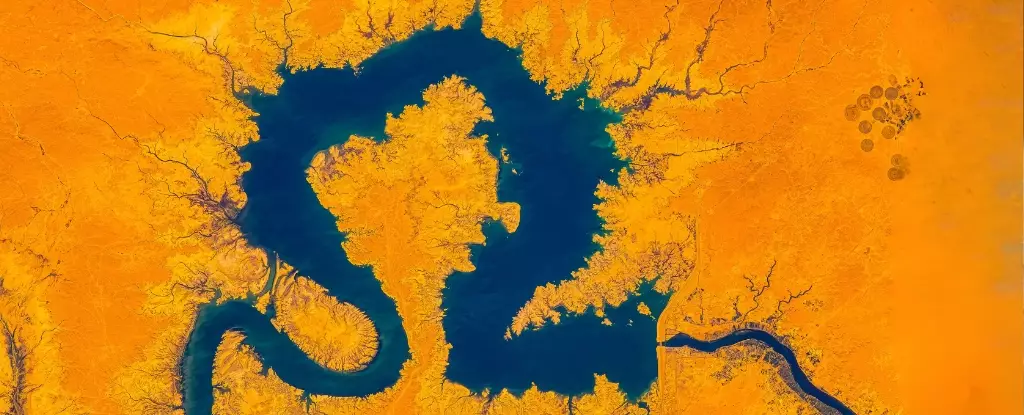Human activity, often dismissed as mere superficial influence, is subtly reshaping the very foundations of our planet’s physical behavior. Recent scientific revelations illuminate how large-scale water retention behind dams has precipitated tangible shifts in Earth’s rotation and magnetic configuration. This discovery starkly contradicts the conventional narrative that mankind’s environmental imprint is limited to surface-level phenomena like pollution and climate change. Instead, it underscores a profound, yet largely overlooked, capacity for human systems to interfere with Earth’s geophysical processes in ways that could have long-term, global consequences.
These dam-induced shifts extend far beyond the obvious environmental disruptions. By altering mass distribution on the planet’s surface—piling colossal volumes of water into reservoirs—we are inadvertently nudging Earth’s delicate balance. The findings from Harvard geophysicists highlight a startling reality: human-engineered structures are capable of causing measurable changes in Earth’s axial position and even influencing the magnetic poles. This means that human civilization is not merely adjusting to natural planet movements but actively participating in planetary-scale phenomena, raising serious questions about our responsibility for planetary health and stability.
Our Disruptive Role in Geophysical Processes
The science indicates that the accumulation of water behind reservoirs has shifted Earth’s axis by approximately one meter—about three feet—and caused a notable sea level decline of 21 millimeters. While these figures may seem insignificant in isolation, they are emblematic of humanity’s broader influence on Earth’s mass distribution. As we dam rivers and trap water inland, we remove it from the oceanic system, reducing sea levels temporarily but triggering a redistribution of mass that can directly influence planetary behaviors like Earth’s rotation.
This redistribution acts similarly to an ice skater pulling in their arms to spin faster; added mass closer to the equator causes the planet’s axis to tilt or shift. Such shifts lead to what scientists term “true polar wander,” where the surface reorients itself relative to the magnetic poles, not the magnetic poles themselves. The implications extend beyond simple geographical adjustments; they influence the position of the magnetic north and impact navigational systems, climate patterns, and even the stability of Earth’s magnetic field. These impacts are not trivial—they are a testament to how profoundly our infrastructural decisions reverberate through Earth’s natural systems.
Furthermore, the historical analysis of pole movements reveals two distinct phases corresponding to global dam-building trends. Initially, from the mid-19th century to mid-20th century, the North Pole drifted eastward toward Russia. Subsequently, from the mid-20th century onward, the pole shifted westward, aligning with increased dam construction in Asia and Africa. This pattern illustrates a stark link between human engineering achievements and planetary-scale movements, challenging the idea that our environmental footprint is limited to pollution or climate change.
The Ethical and Practical Implications of Manipulating Earth’s Geodynamics
The notion that dams might be influencing Earth’s magnetic poles and rotation raises profound ethical questions. Are we aware of the cumulative damage we cause when we manipulate natural water systems at such scale? The fact that dams have so far sequestered a quarter of this century’s sea level rise—a measly 1.2 millimeters per year—is a mixed blessing. While it might seem advantageous at first glance, as it temporarily counters rising sea levels caused by climate change, it is a dangerous illusion. Relying on such natural manipulations is a fragile and shortsighted strategy. The risks include unpredictable shifts in Earth’s magnetic field, modifications in ocean currents, and potentially destabilizing seismic or volcanic activity.
Moreover, these findings underscore the urgent need to re-evaluate our developmental priorities. Human technology has reached a scale where it can subtly influence planetary physics, and this raises questions about sustainability and stewardship. To continue down the current path—expanding dam infrastructure without considering these planetary consequences—is to flirt with unwittingly destabilizing the systems that sustain life on Earth. Responsible environmental management must encompass a broader understanding of how human infrastructure interacts with Earth’s deep interior and surface dynamics.
This research also challenges us to develop policy frameworks that account for these hidden impacts. It calls for a paradigm shift from viewing environmental stewardship narrowly as pollution control to understanding it as safeguarding the planet’s fundamental geophysical integrity. Our choices—where we build dams, how we manage water resources—are no longer isolated decisions but integral to the health and stability of Earth’s mechanisms. Recognizing this interconnectedness is paramount to truly moving toward a sustainable future.
In contemplating the influence of human engineering on Earth’s core processes, it becomes evident that our civilization wields more power than we prefer to acknowledge. The mounting evidence demands that we confront our role not just as beneficiaries of Earth’s resources but as active participants—sometimes unwitting—forging a future that hinges on our understanding of, and respect for, the planet’s complex and delicate systems.


Leave a Reply